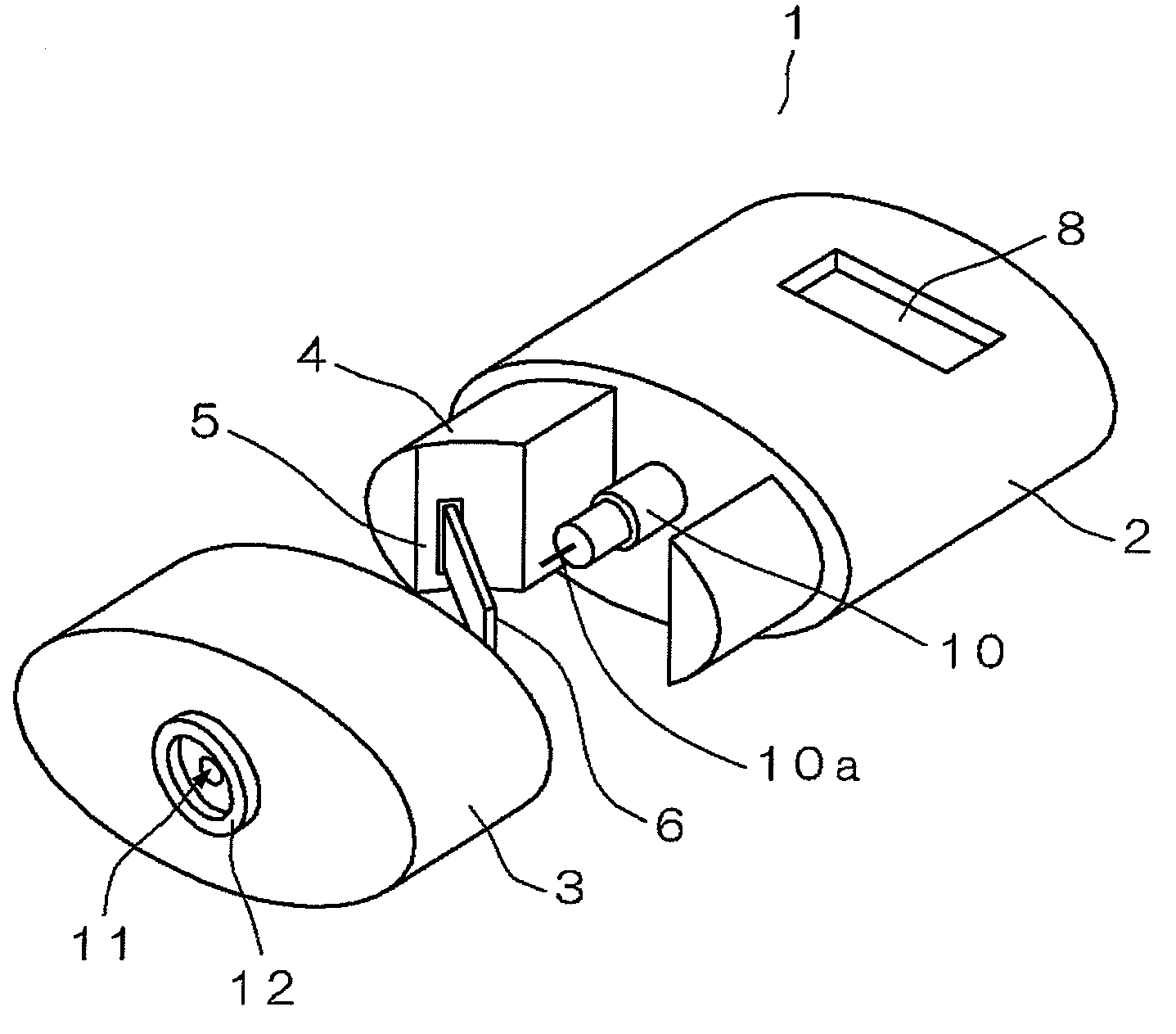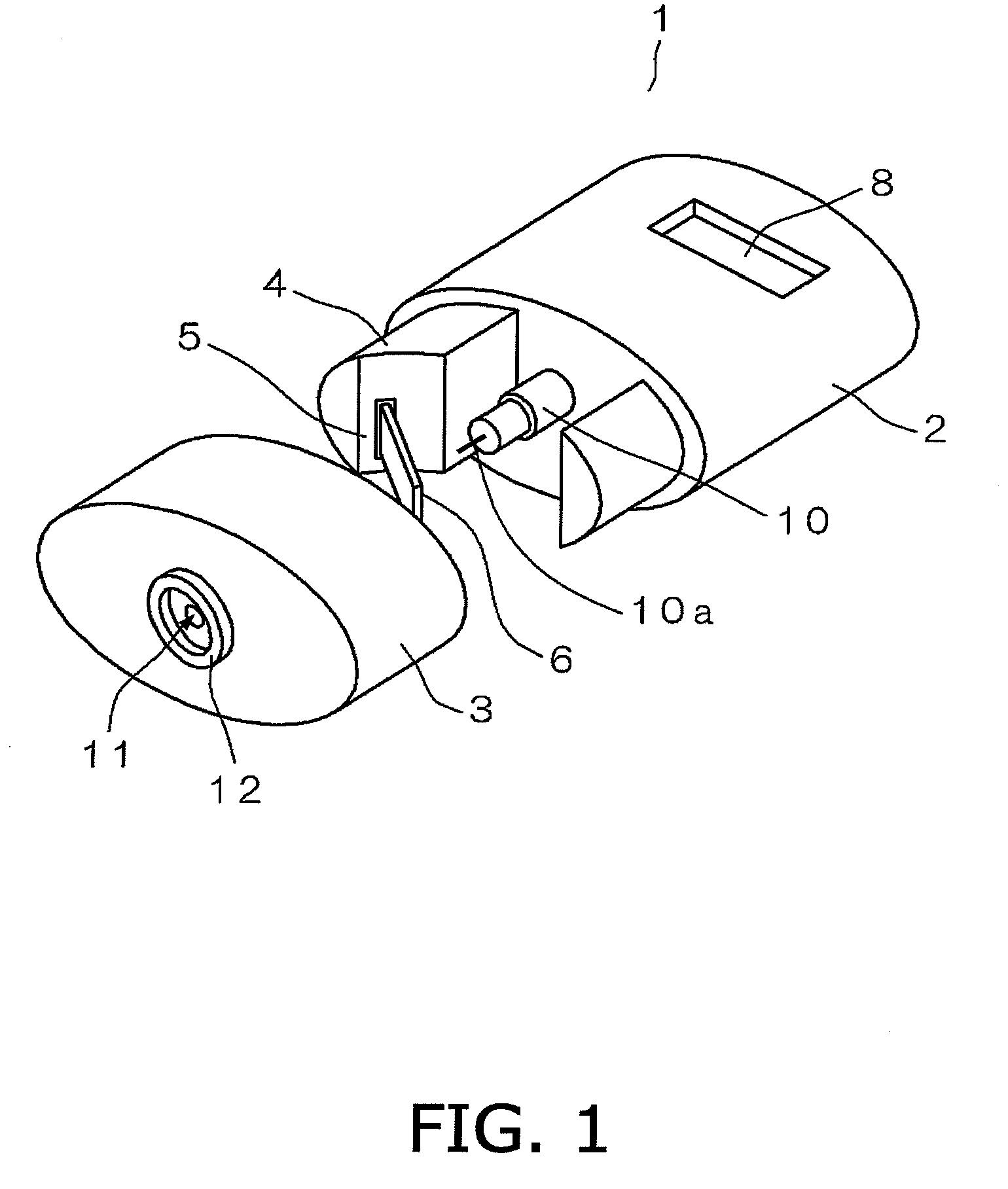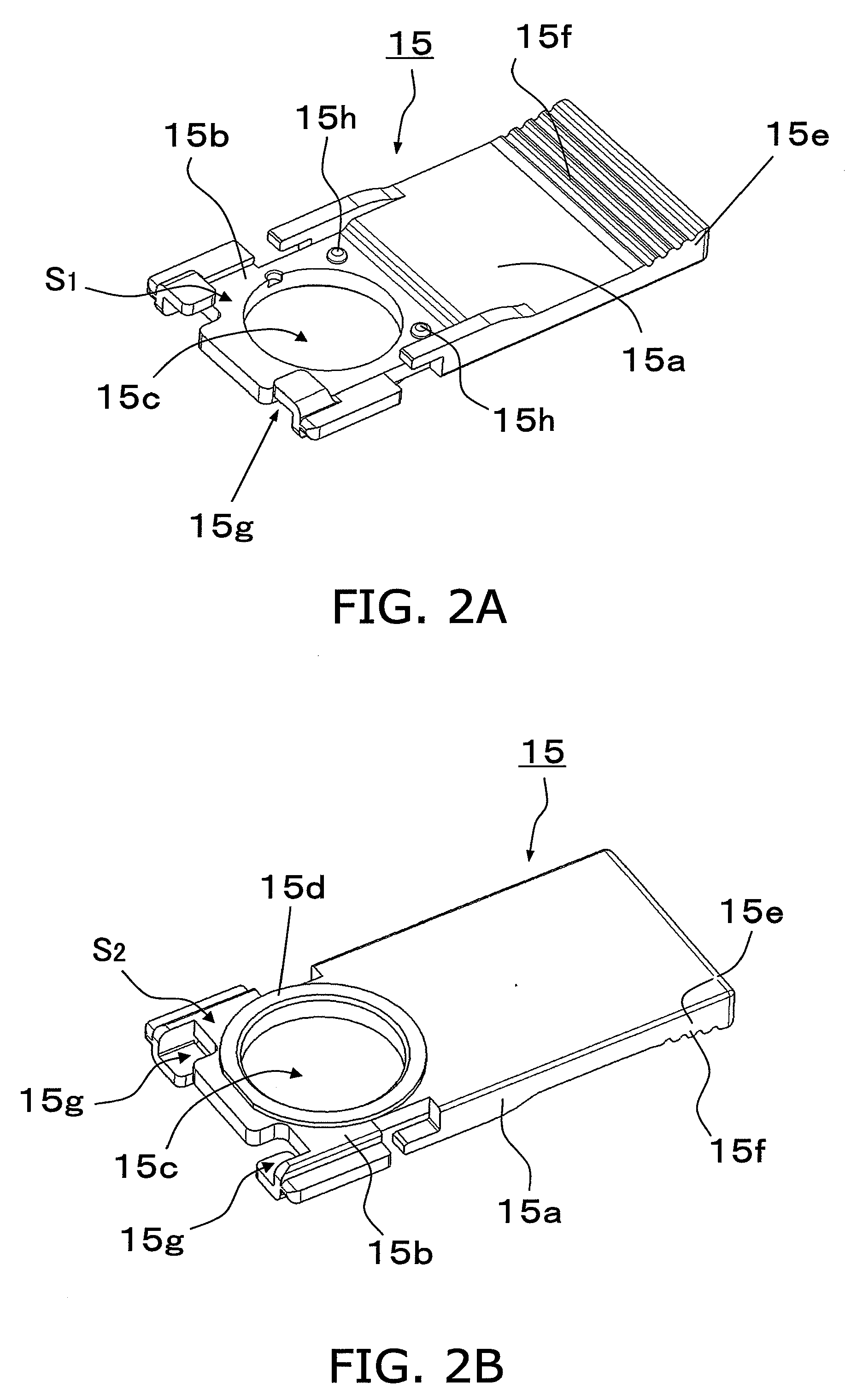Sensor holder, holder unit in which blood sensor is mounted to the sensor holder, and blood testing device to which the holder unit is mounted
- Summary
- Abstract
- Description
- Claims
- Application Information
AI Technical Summary
Benefits of technology
Problems solved by technology
Method used
Image
Examples
embodiment 1
[0042]FIG. 2A is an oblique view of a sensor holder 15 pertaining to Embodiment 1, as seen from one side (a first face side), and FIG. 2B is an oblique view of the sensor holder 15 as seen from the other side (a second face side). FIG. 2C is an oblique view of a holder unit 16 pertaining to Embodiment 1, as seen from one side (the first face side), and FIG. 2D is an oblique view of the holder unit 16 as seen from the other side (the second face side). The holder unit 16 is such that a blood sensor 30 is mounted to the sensor holder 15.
[0043]As shown in FIGS. 2A to 2D, the sensor holder 15 is formed from a main body center part 15a, a sensor mounting part 15b that is provided at one end of the main body center part 15a and on which the blood sensor 30 is placed, a finger holding part 15d provided on the opposite side of the blood sensor 30 across the sensor mounting part 15b, and a grip 15e provided at the other end of the main body center part 15a.
[0044]As shown in FIGS. 2A and 2B,...
embodiment 2
[0079]Embodiment 2 differs from Embodiment 1 in that an opening 52a (corresponds to the opening 22a in Embodiment 1) into which the holder unit 16 is inserted is provided in the middle of the lower edge of a case 52 (corresponds to the case 22 in Embodiment 1). Therefore, the finger on either the one hand 17 or the other hand 18 can be punctured. In the following description of the drawings, those components that are the same as in Embodiment 1 are numbered the same. Also, since the mounting of the parts in the case 52 not discussed below is the same as the mounting of the parts in the case 22 pertaining to Embodiment 1, it will not be described again. The same applies to the other embodiments given below.
[0080]FIGS. 11A and 11B are oblique views of a blood testing device 51 pertaining to Embodiment 2 (corresponds to the blood testing device 21 in Embodiment 1), as seen from the front face side. More specifically, FIG. 11A shows the state before the holder unit 16 is inserted into t...
embodiment 3
[0083]Embodiment 3 differs from Embodiment 1 in that a cut-out 63 is provided at the lower right corner of a case 62 (corresponds to the case 22 in Embodiment 1), and that an opening 62a (corresponds to the opening 22a in Embodiment 1) into which the holder unit 16 is inserted is provided to the cut-out 63. Therefore, the cut-out 63 forms a larger space above and below the grip 15e of the holder unit 16, and this makes it easier to remove and install the holder unit 16.
[0084]FIGS. 12A and 12B are oblique views of a blood testing device 61 pertaining to Embodiment 3 (corresponds to the blood testing device 21 pertaining to Embodiment 1), as seen from the front face side. More specifically, FIG. 12A shows the state before the holder unit 16 is inserted into the opening 62a. As shown in FIG. 12A, the cut-out 63 is formed at the lower right corner of the case 62 of the blood testing device 61. Also, the opening 62a is provided on the inside of the cut-out 63, that is, on the side of the...
PUM
 Login to View More
Login to View More Abstract
Description
Claims
Application Information
 Login to View More
Login to View More - R&D
- Intellectual Property
- Life Sciences
- Materials
- Tech Scout
- Unparalleled Data Quality
- Higher Quality Content
- 60% Fewer Hallucinations
Browse by: Latest US Patents, China's latest patents, Technical Efficacy Thesaurus, Application Domain, Technology Topic, Popular Technical Reports.
© 2025 PatSnap. All rights reserved.Legal|Privacy policy|Modern Slavery Act Transparency Statement|Sitemap|About US| Contact US: help@patsnap.com



